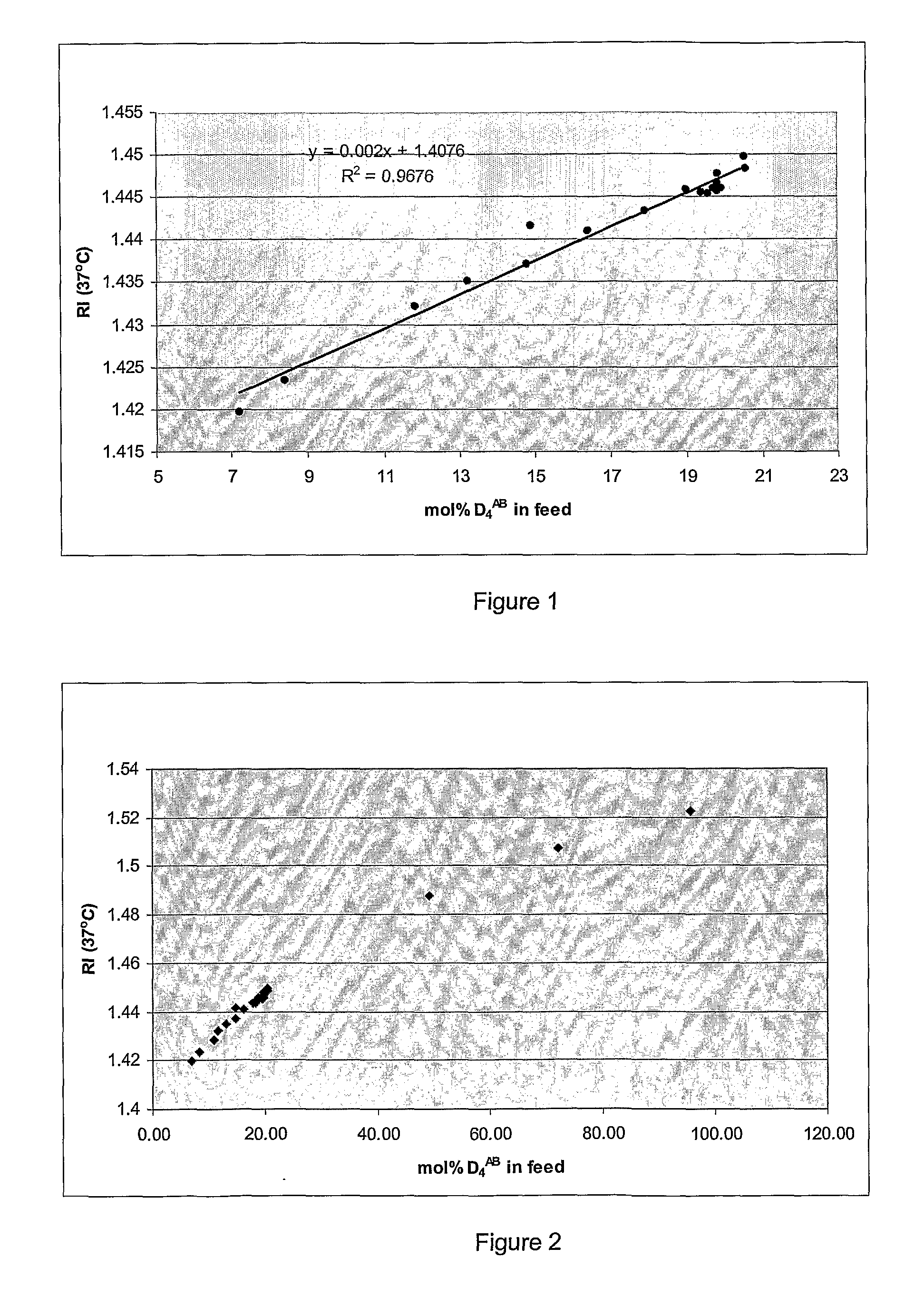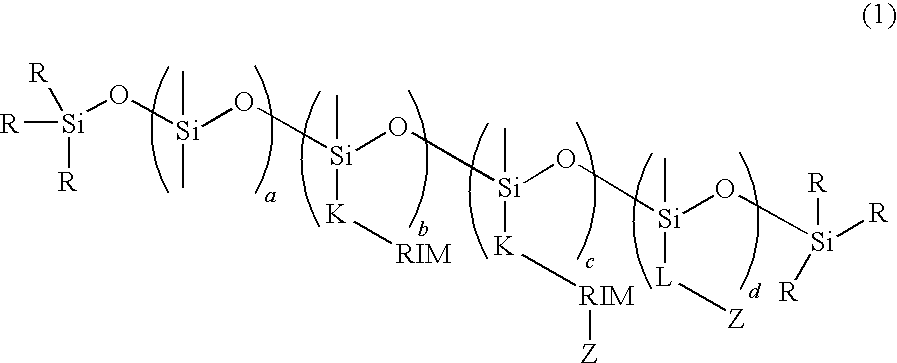Biological Polysiloxanes
- Summary
- Abstract
- Description
- Claims
- Application Information
AI Technical Summary
Benefits of technology
Problems solved by technology
Method used
Image
Examples
example 1
Preparation of Functional Cyclic Siloxanes by Hydrosilylation of 1,3,5,7-tetramethylcyclotetrasiloxane (D4H)
[0111]The product obtained by hydrosilylation reaction is a siloxane compound represented by the following scheme:
example 1a
Preparation of a cyclotetrasiloxane monomer functionalized by allyl methacrylate (D4AM)
[0112]2 g of tetramethylcyclotetrasiloxane (D4H) was dissolved in 40 ml of dry toluene in a round bottom flask equipped with a reflux condenser. To this solution was added 10 drops (0.180 g) of Karstedt's catalyst ([Pt]=3.4×10−5 mol / ml). The flask was shrouded in aluminium foil to exclude light. 4.62 g of distilled allyl methacrylate was added dropwise from the top of the condenser. The solution was then heated up to 60° C. for 18 hours. Analysis by NMR showed the reaction to be complete. The solvent and residual allyl methacrylate were removed under reduced pressure at room temperature. The product was taken up in 50 ml of dry toluene and stored at −15° C. 1H NMR spectroscopic data for D4AM is shown in Table 1.
example 1b
Preparation of a Cyclotetrasiloxane Monomer Functionalized by Allyl Benzene (D4AB)
[0113]9.746 g of D4H was dissolved in 10 ml of dry toluene in a round bottom flask equipped with an air condenser and a drying tube. To this solution was added 0.202 g of Karstedt's catalyst ([Pt]=3.4×10−5 mol / ml). The solution was heated while stirring to 50° C. A solution of 24.64 g allylbenzene in 45 ml of dry toluene was added at such a rate as to maintain an internal temperature of 58-60° C. After the addition, the reaction was stirred for an additional 1 h and then cooled to room temperature. 2.0 g of activated carbon was added and the mixture was allowed to stir for 45 minutes. The suspension was filtered through Celite and the solvent was removed under reduced pressure to obtain the crude product that was then re-dissolved in 10 ml of dry toluene and precipitated by pouring into 250 ml of methanol with stirring. Then the precipitate was allowed to settle and the supernatant was decanted. The pr...
PUM
| Property | Measurement | Unit |
|---|---|---|
| Temperature | aaaaa | aaaaa |
| Temperature | aaaaa | aaaaa |
| Pressure | aaaaa | aaaaa |
Abstract
Description
Claims
Application Information
 Login to View More
Login to View More - R&D
- Intellectual Property
- Life Sciences
- Materials
- Tech Scout
- Unparalleled Data Quality
- Higher Quality Content
- 60% Fewer Hallucinations
Browse by: Latest US Patents, China's latest patents, Technical Efficacy Thesaurus, Application Domain, Technology Topic, Popular Technical Reports.
© 2025 PatSnap. All rights reserved.Legal|Privacy policy|Modern Slavery Act Transparency Statement|Sitemap|About US| Contact US: help@patsnap.com



